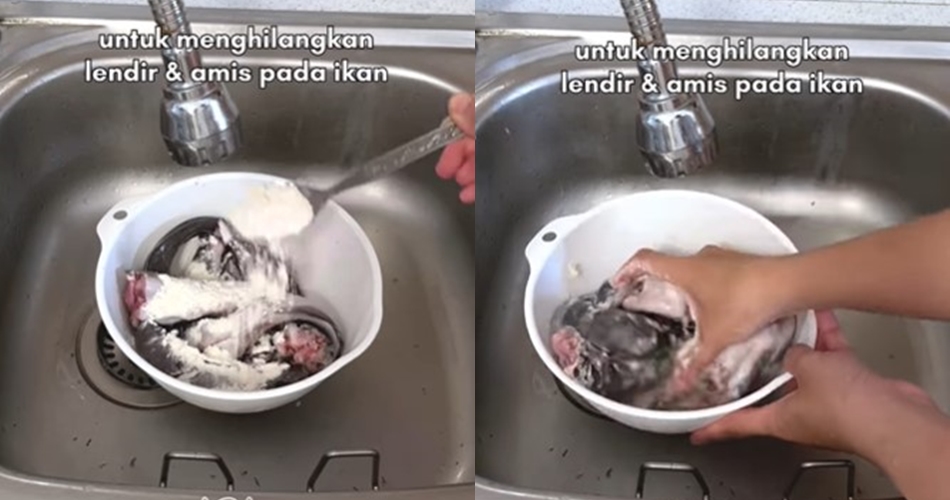foto: Instagram/@of3house
Brilio.net - Catfish has always been a favorite food for people who like to eat fish. The reason is, catfish meat has a soft texture and savory taste. Especially if catfish is fried and served with warm rice, fresh vegetables and chili sauce, this dish will definitely make it hard to stop eating.
Apart from being fried, this type of fish is also suitable for processing into typical Indonesian menus such as mangut lele , catfish with rujak spices, catfish rica-rica, catfish with woku spices, and so on. These various food preparations will definitely not make you bored even though the main ingredient is the same, namely catfish.
However, many people are reluctant to cook their own catfish at home, because they think it is difficult to clean. Fresh catfish that have just been bought from the market sometimes have mucus attached to the surface of the skin. On the other hand, catfish sometimes still have a fishy smell even though they have been washed many times.
So, to get rid of the mucus and fishy smell, people usually rely on lime juice. The fresh aroma and strong acidity of lime work effectively to remove mucus and the fishy smell of fish. However, if you don't have a stock of limes at home, don't worry because there are other tricks.
Tricks to get rid of mucus and the fishy smell of catfish.
Netizens shared the trick to get rid of the mucus and fishy smell of catfish on the Instagram account @of3house, reported by BrilioFood on Monday (22/4). Even without lime, this woman admits that there is another kitchen ingredient that is no less effective for removing mucus and the fishy smell of catfish, you know.
The first thing you have to prepare is a bowl to put all the fish you want to clean. After that, sprinkle the fish with a few spoons of flour. Yup, wheat flour is the main kitchen ingredient for practicing this trick to remove mucus and the fishy smell of catfish.
After dusting it with flour, stir the catfish so that the flour spreads all over the surface of the catfish. Later, the flour will absorb all the mucus and fishy smell of the catfish, you know.

photo: Instagram/@of3house
After that, rinse the catfish with running water while stirring gently. If the catfish no longer feels slippery, it means that all the slime and fishy smell of the catfish has disappeared. Drain the catfish, then this food ingredient is ready to be cooked or stored as stock in the refrigerator.

photo: Instagram/@of3house
How about it, from now on you no longer need to be confused about how to get rid of the mucus and fishy smell of catfish, right? Taking a peek at the Instagram upload @of3house which has received 4 million viewers, quite a few netizens have left various enthusiastic comments about the benefits of wheat flour, you know.
"It's really as effective as using flour. Another benefit is that if you put it in the refrigerator, it can heal hands that have been splashed with hot oil," said Instagram @nengsepti.
"When my son accidentally opened the refrigerator, he kept pulling the egg rack which caused all 1kg of eggs to break on the floor. I also used wheat flour to clean up the broken eggs ," wrote Instagram @airindelia_.
"What kind of flour is that? starch, wheat flour, rice flour?" asked Instagram @spyware111 and received a reply from the video owner, "everything uses flour, except for clearing the oil, use cornstarch."
View this post on Instagram
How to store wheat flour so it is free from fleas.
Storing wheat flour properly can help prevent infestation. Here are some tips for storing wheat flour to keep it fresh.
1. Airtight container.
Use an airtight container or tight-fitting container to store wheat flour. Make sure that no air enters the container, as air can create excess moisture and promote the growth of fleas.
2. Store in a cool and dry place.
Place the container of flour in a cool, dry, and dark place, such as a cupboard or kitchen shelf away from sources of heat and direct sunlight. Stable temperatures help prevent flea growth.
3. Keep away from moisture.
Make sure the flour container is not exposed to moisture or condensation. If your environment tends to be humid, consider adding silica gel or rice packets to the container to absorb moisture.
4. Check regularly.
Regularly check your flour to ensure there are no signs of lice growth or excess moisture. If you see signs of infestation or moisture, throw away the flour immediately and clean the container before storing new flour.
(brl/tin)